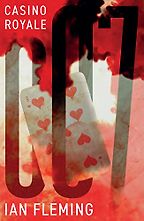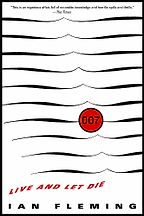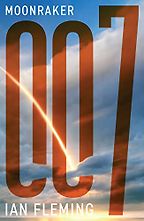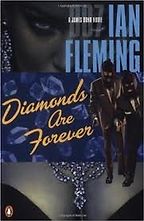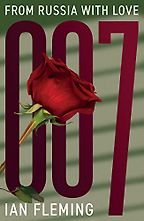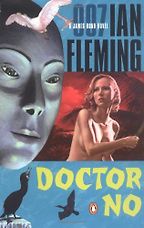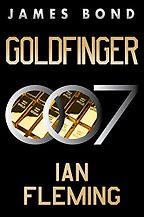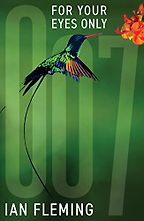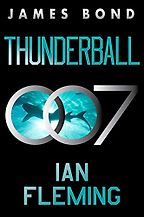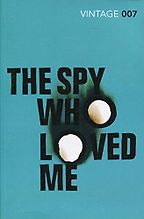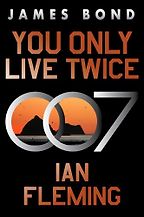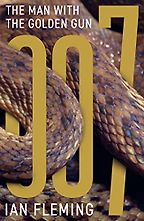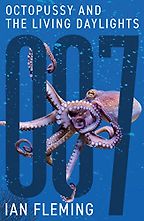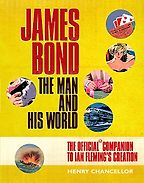James Bond Books in Order
Last updated: March 25, 2025
The James Bond books by British author Ian Fleming are some of the most popular spy novels ever written. Fleming published the first James Bond novel, Casino Royale, in 1953 when he was 43 years old. The last, The Man With the Golden Gun, was published posthumously in 1965. Like his protagonist, Fleming drank and smoked too much and he died of a heart attack at the age of just 56. The James Bond books are of their time, but that doesn't mean they aren't worth reading. Fleming is a beautiful writer and it's hard not to read any of his books without becoming much more aware of the impact of ordinary, unremarkable things around you—whether it's the smell of a bar of soap or the psychology of playing a game of stone, paper, scissors. Unlike the movies, the James Bond books are not fast-paced action thrillers. While shooting and other violent acts take place, most of the action is very slow-moving, taking place almost at a standstill—and yet the books keep you turning the pages.
Below, we've listed the James Bond books in the order Fleming wrote them. They all work well as standalone novels and absolutely do not need to be read in order. 12 of the books are novels; two (For Your Eyes Only and Octopussy and The Living Daylights) are short story collections. On Her Majesty's Secret Service is our favourite, but Thunderball is also extremely good.
“I think it’s the best of them, and it’s wonderful because it reveals what I think is the essential Bond. The film Bond is very, very different from the character that Ian Fleming invented. The real character was unknowable. There’s something rather creepy and peculiar about the original James Bond and you get that in buckets in Casino Royale. He’s a tough man and he’s absolutely ruthless.” Read more...
Ben Macintyre, Journalist
Live and Let Die
by Ian Fleming
Live and Let Die is the second James Bond book, published in 1954. There is more plot than in Casino Royale, and the story takes Bond to the United States and the Caribbean.
Moonraker
by Ian Fleming
Moonraker is the third James Book book, published in 1955, with most of the action taking place on the south coast of England. Bond is asked to look into the industrialist Hugo Drax, seemingly a model citizen. In vintage Fleming style, M's suspicions are raised only because Drax cheats while playing cards at his private club.
Diamonds Are Forever
by Ian Fleming
Diamonds Are Forever is the fourth of Ian Fleming's books featuring British spy James Bond, published in 1956. As the title suggests, it's about diamond smuggling and the book opens in Africa. Most of the action, however, takes place in the United States. As with most James Bond books, the pace is slow but you're drawn into the story. It's a really nice snapshot of the US in the 1950s (including New York City's Diamond District, racing at Saratoga Springs and gambling in Las Vegas), told through the eyes of an observant and interested Brit with a feel for the sensual.
“I think it’s the best written of the Bond books. It has some fantastic and very memorable sequences and all the Bond elements you want. Fleming really did put a lot into it. It’s set in Istanbul. It’s got a sequence on the Orient Express. There’s a beautiful woman. It’s got spies and all sorts of mad adventures in Turkey. The opening is different from the other Bond books. In the first third of the book, Bond doesn’t appear in person. It follows in some detail the setting up of a plot by the Russian secret service to bring Bond down. It’s really vividly written, creating this great villain, Red Grant, and also Rosa Klebb, the evil Russian spymaster.” Read more...
Charlie Higson, Thriller and Crime Writer
“This is the one where James Bond has to go out to Jamaica and investigates the disappearance of Strangways, the head of Station J in Kingston. What I really like about all his books is the attention to detail. It was all based on his experiences when he worked for naval intelligence during the war.” Read more...
Pete Winner, Military Historians & Veteran
“I was wondering, ‘How do you do Bond in a short story?’ and it was really interesting to see how Fleming did it. He came up with a good plot for each story. He was trying to develop a TV series and they’re based on outlines he’d written for that. They’re intense moments, in a way, vignettes of a key event that he gets involved with. In one of them, he’s sent to assassinate an enemy spy with a sniper’s rifle. They’re a good variety of stories, and they’re all very punchy. He puts James Bond into a different situation, in a different location, in each one.” Read more...
Charlie Higson, Thriller and Crime Writer
The Spy Who Loved Me
by Ian Fleming
The Spy Who Loved Me is the tenth James Bond book, published in 1962, and different from the others in that the main protagonist (and narrator) is a Canadian woman who is travelling down the East Coast of the US to get away from her life in London. It's one of the shorter Bond books (just 164 pages) and Bond himself does not appear till the third part of the book. The setting is a motel in the Adirondacks in New York State, 10 miles west of Lake George. It's not a bad plot—featuring American gangsters—and the descriptions of a 1960s American motel and its mod-cons take you back into the past.
“It is a great book. It’s got all the classic Bond elements in it. The film is very faithful to the book. In the book, the women are from around England, but in the film, they’re from around the world. Blofeld brainwashes them by hypnotizing them to take back biological weapons that will destroy the agriculture when they go home. It’s got the famous hideout on the top of a mountain in Switzerland. Fleming wrote about what he was interested in and where he liked visiting. He loved skiing. This was an area of the Alps he knew really well. He was fascinated in genealogy, so he researched that properly, and he put all that into the book.” Read more...
Charlie Higson, Thriller and Crime Writer
“If you’re a Bond fan and you want to find out more about Fleming and the creation of the novels, there’s a great book by Henry Chancellor called James Bond: The Man and His World. The Fleming estate gave Chancellor full access to Fleming’s archive, and he’s gone back and looked at all the bits and pieces that came together to make each book and the influences.” Read more...
Charlie Higson, Thriller and Crime Writer
